This article has been reviewed according to Science X's editorial process and policies. Editors have highlighted the following attributes while ensuring the content's credibility:
fact-checked
trusted source
proofread
Mollusks from polar expeditions reveal new details about the ocean
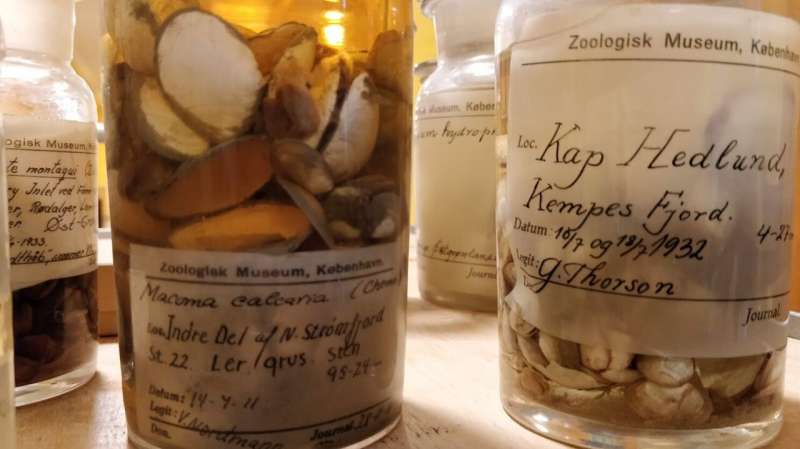
In the early hours of 30 October 1961, a Russian bomber took off and flew north. The plane was headed for the Novaya Zemlya archipelago in the Russian part of the Arctic. When the pilot saw the islands far below, he released the cargo—a bomb the size of a double-decker bus.
While the pilot accelerated to get out of range, the bomb slowly descended to the ground under the canopy of a huge parachute. A minute passed, and then the sky was illuminated by the harshest light ever created by humans.
The bomb, later named Tsar Bomba, is the most powerful nuclear weapon ever detonated. It was the culmination of the nuclear tests carried out by the USSR, the United States and a number of other countries in the years following World War 2.
Two years later, in 1963, the nuclear powers agreed to cease atmospheric nuclear tests, and the tests were moved underground.
However, after almost 20 years of detonations—from the first in 1945 until the treaty in 1963—the chemistry of the oceans had changed; this is a change that will last for thousands of years.
For example, American and French detonations in the Pacific Ocean killed thousands of fish and depleted biodiversity in the area. But the tests also had another consequence. They made it difficult to use carbon-14 dating.
Researcher Christof Pearce of the Department of Geoscience, Arctic Research Centre and iClimate at Aarhus University and a number of his colleagues have attempted to find a method to get around these problems. Their work is published in Geochronology.
"We can't calibrate the carbon-14 age of fossilized animals or plants found in ocean sediments. The nuclear tests created massive amounts of carbon-14 in the atmosphere, which were slowly absorbed into the ocean. Whereas the atmosphere quickly regained some sort of equilibrium, it will take hundreds, or even thousands of years before the ocean can do the same," says Pearce.
"That's why we need material from before the nuclear tests—and that's where the polar expeditions come in. We can use them to find out how much carbon-14 there was before the detonations and adjust the dating.
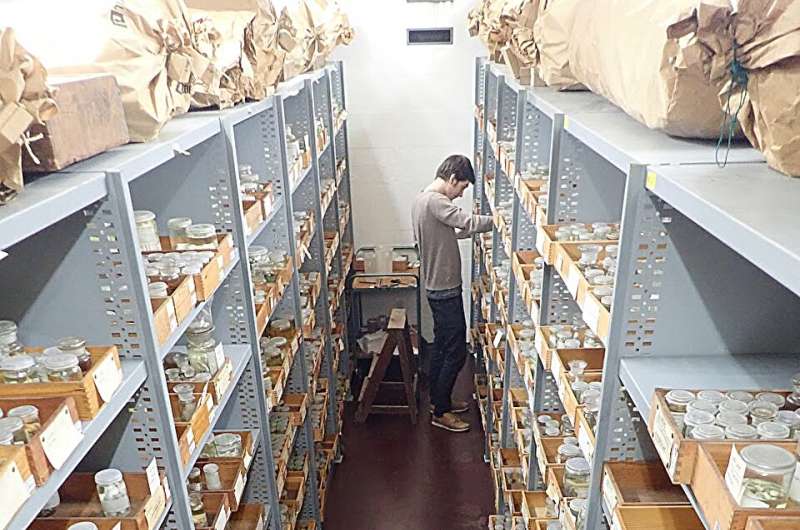
What is carbon-14 dating?
The Earth's atmosphere consists of a number of gases such as oxygen, CO2 and nitrogen.
When nitrogen atoms move into the upper layers of the atmosphere, they're hit by free neutrons released due to cosmic radiation. The nitrogen atoms absorb the neutrons and are converted to carbon-14 and emit a proton. The new carbon-14 atoms then bind with oxygen, creating CO2.
Trees, shrubs and other plants absorb CO2 from the air during photosynthesis, meaning they also absorb carbon-14.
However, the vast majority of CO2 in the atmosphere consists of carbon-12. Only a small proportion of CO2 contains carbon-14, which is radioactive. Therefore, plants primarily absorb carbon-12.
When a plant dies, it stops absorbing new carbon, but because carbon-14 is radioactive, it decays and disappears slowly. Carbon-12, on the other hand, does not. Researchers can calculate how old a plant residue is by measuring how much carbon-14 is left compared with carbon-12. We know the half-life of carbon-14 is 5,700 years—and we know that the natural distribution between carbon-12 and carbon-14 is fairly stable.
Plants are eaten by herbivores, who thereby absorb the carbon. The herbivores in turn are eaten by carnivores, which then also absorb it. This is why the method can also be used to carbon date animals and humans.
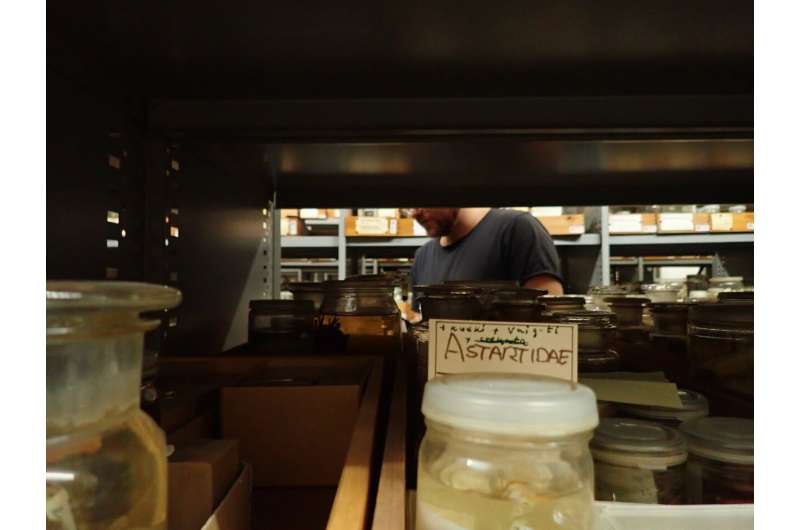
Museums are a treasure trove
The nuclear tests are not the only reason why the age of carbon-14 in the oceans has changed. Human emissions of CO2 have also shifted the balance—but in the opposite direction.
As the name suggests, fossil fuels consist of fossil plant material and they therefore have a high carbon-14 age. CO2 emissions have therefore had the opposite effect to the atomic bombs that created new carbon-14. This is a well-known problem, especially for geologists, archaeologists and other researchers interested in what the ocean looked like in the past.
For Pearce, one of the most important sources of knowledge about the climate and marine environment of the past is sediment samples. Just like researchers who drill ice cores out of the ice sheet to study the climate of the past, Pearce and his colleagues use cores from of the seabed.
The different layers in the cores are full of microfossils and organic material that can reveal what the oceans were like in the past.
But in order to use the knowledge stored in the cores pulled from the seabed, the researchers need to know when the layers were formed. And this is where carbon-14 enters the picture.
"The problem is that we don't know the natural level of carbon-14 everywhere in the ocean. We don't have a zero point like we do in the atmosphere. When we try to date a layer of sediment, we're often off by several hundred years. We need material of a known age from the time before the major human disturbances. I've spent a long time thinking about how we could solve the carbon problem for the ocean in parts of the Arctic," says Pearce.
"When I was working in Stockholm, I walked past some display cases that line the hallways of the university. They're all about the old polar expeditions. That's when it hit me, samples from before the nuclear tests might still exist that I could examine."
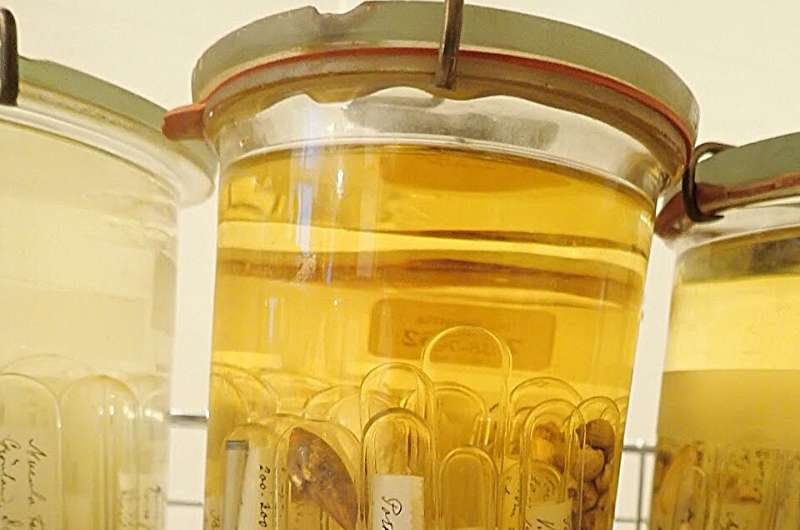
Samples from Danish and Swedish expeditions
Pearce then set out to find out whether samples from the old expeditions had been preserved. If they were preserved, he looked into whether he could use them. He quickly discovered that both Denmark and Sweden had samples from their polar expeditions preserved in museum collections.
One of the old expeditions he looked at set sail from Copenhagen almost 100 years ago. It was called the Godthaab expedition, and even though it is one of the lesser known expeditions, the researchers on it brought back plenty of valuable knowledge. This knowledge is now a goldmine for researchers like Pearce.
"The expedition sailed between Greenland and Canada. It measured the salinity and temperature of the water, measured depth, took bottom samples and collected mussels. A huge endeavor. Fortunately, samples and records from that time are still in the storage rooms at the Zoological Museum in Copenhagen. And as luck would have it, we were allowed to take some of the samples back with us. This allowed us to test the carbon-14 levels in the ocean before the nuclear tests."
The Swedish Museum of Natural History in Stockholm also allowed the research team to take samples from old polar expeditions.
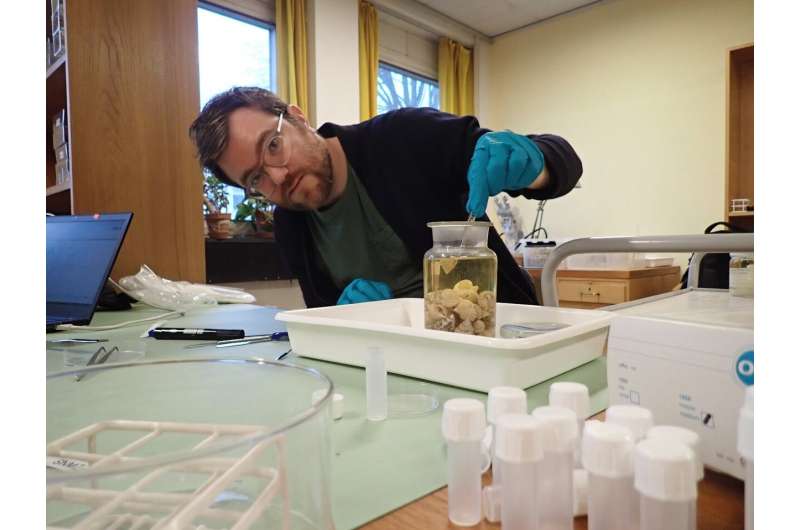
A foul-smelling job
Pearce and his colleagues brought back almost 100 samples to their laboratory.
However, only mussels and snails with soft tissue left in them could be used. And preparing them for analysis wasn't a job for people with a delicate sense of smell.
"We fished half-rotten mussels and snails out of the old glass bottles. It smelled awful but we had to get them out and dry them before they could be used. Once the samples were ready they were carried to the Department of Physics and Astronomy, where the only laboratory in Denmark that can carry out carbon-14 dating is situated."
Then the researchers waited in anticipation for the results, fingers crossed that the samples would be good enough.
A more precise C14-dating
Luckily, the samples were good, and once the results started ticking in, Pearce could see that they would have enough data to date more accurately material from around Greenland.
"And not only that, we now know much more about local variations. The concentration of carbon-14 in the ocean is affected by ocean currents. The lowest values were found around Baffin Bay, between Canada and Greenland, where the influence of the Arctic Ocean is strongest. Low values were also found in areas with a lot of sea ice, which acts as a barrier between the atmosphere and ocean," says Pearce.
He explains that the new calculations will make researching the ocean climate of the past more accurate. This knowledge is crucial if we are to predict how climate change will affect oceans in the future.
"In order to calculate what will happen to Arctic waters in the future, we need to know how the ocean has evolved over the past several thousand years. And we now have a tool to help us to do this more accurately," he says.
"Furthermore, I think we've shown how important it is to preserve the samples in old museum collections. They may not be of great value today, but you never know, they might be important in the future, just like the 100-year-old mollusks suddenly became important to us."
More information: Christof Pearce et al, The marine reservoir age of Greenland coastal waters, Geochronology (2023). DOI: 10.5194/gchron-5-451-2023
Provided by Aarhus University




















